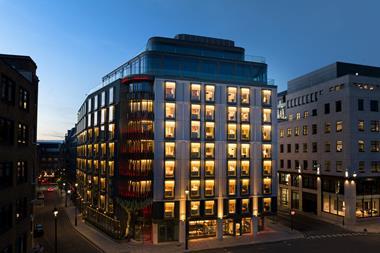Institutional investment and increasing demand for flexible living space amongst Europe’s growing populations are creating a bright future for the coliving sector, according to a new report published by agent JLL.

The convergence of rising consumer demand for alternative living space and increasing institutional investment in non-traditional real estate has put Europe’s coliving sector at a tipping point, with more than 23,150 coliving beds either built or in development across Europe.
Coliving assets - where tenants lease optimised personal areas and share communal spaces and amenities – provide a flexible and modern solution for the changing lifestyles of today’s urban populations. JLL’s European Coliving Index reveals that surging institutional investment is allowing the sector to scale at pace on the continent. 53% of current operating assets are over 100 beds, but this will increase to 79% once those in the planning stage take form. The average size development will rise to over 250 beds.
'Coliving assets are disruptive and innovative solutions for the changing housing needs of the modern urbanite, particularly in areas where supply and financial pressures are increasing the demand for more flexible living space,' said Richard Lustigman, director – living capital markets at JLL. 'Coliving products offer choice in a market short of options and the sector’s growth potential is huge. It is essential that legislation is put in place to protect occupiers, support its value and enable its development so that pipelines can extend beyond their current numbers.'
Europe’s coliving beds are heavily concentrated in the continent’s capitals, with London, Amsterdam, Paris, Berlin, Dublin and Vienna leading the market. London and Amsterdam account for nearly 40% of coliving stock. However, with a quarter of the market spread over 24 cities across Europe, the potential for growth is widespread – both for capitals consolidating their positions and for secondary cities to enter the mix.
The UK is a particularly strong growth market. London holds over 20% of the current European market, and Manchester, Glasgow and Birmingham also rank in the top 20 coliving cities in Europe. Given 85% of the UK’s coliving assets are still in the pipeline, the growth of the sector is expected to continue.
'Coliving accommodation will play a leading role in future city structures and increasing institutional investment has established the sector as a competitive part of the broader property market. Going forward in Europe, growth will be particularly spurred by younger city demographics taking their first step on the property ladder – such as the fast-growing post-graduate and post-PBSA populations who are calling for more convenience and choice in housing,' added James Kingdom, associate – living research and strategy at JLL.










